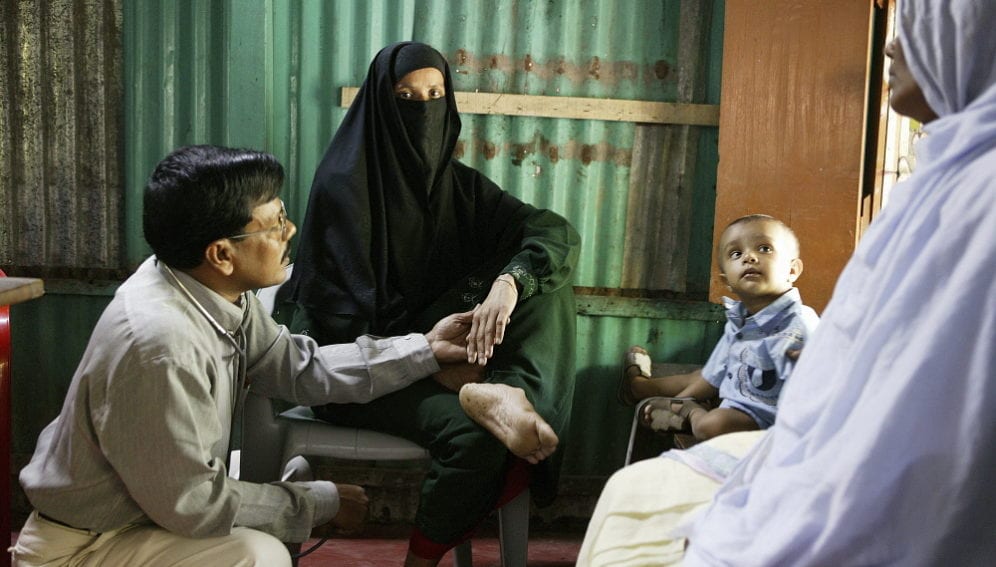By: Naimul Haq
Send to a friend
The details you provide on this page will not be used to send unsolicited email, and will not be sold to a 3rd party. See privacy policy.
[DHAKA] Public health experts in Bangladesh are calling for urgent measures to prevent deaths from lung disease linked to small amounts of arsenic found in drinking water by a joint US-Bangladesh study.
“Unless coordinated efforts are urgently taken to reduce arsenic exposure in the affected areas of Bangladesh, arsenic related deaths will continue to increase, leading to a public health catastrophe in Bangladesh,” says Md. Yunus, member of the study team and senior scientist at the International Centre for Diarrhoeal Disease Research, Bangladesh (icddr,b).
The study, published in July in Epidemiology, screened 26,043 adults from the arsenic-affected in Araihazar, Naryanganj district and Matlab in Chittagong’s Chandpur district to investigate the relationship between skin lesions caused by arsenic exposure and lung disease mortality. The study received support from the US National Institute of Health (NIH).
The survey, which ran over a period averaging 8.5 years until October 2013, found 156 non-malignant lung disease deaths and 90 lung cancer deaths. Based on the study the researchers concluded that persons with arsenical skin lesions had 4.5 times increased risk of lung cancer death compared with those without skin lesions.
The risk of lung cancer mortality further increased with increasing severity of the skin lesions.
“The findings provide strong evidence that ingestion of arsenic through drinking water has significantly increased the risk of death from non-malignant (non-cancerous) lung diseases in a relatively short span (average 8.5 years), in addition to lung cancer mortality,” Yunus said.
Arsenic is classified by the International Agency for Research on Cancer (IARC) as a Group 1 carcinogen.
Mahmudur Rahman, coordinator of the Dhaka Community Hospital and one of Bangladesh’s foremost experts on arsenic-related health issues, says the survey’s findings are in keeping with field findings. “We have diagnosed many villagers exposed to arsenic contaminated water as suffering from cancers of the skin, lung, kidneys and many other internal organs,” Rahman told Scidev.Net.
Says Sharmin Murshid of Brotee, an organisation working to mitigate arsenic-related problems in Bangladesh: “It is now expected that thousands of adults who have already been exposed to arsenic would simply die.”
> Link to abstract of paper in Epidemiology
This article has been produced by SciDev.Net's South Asia desk.














